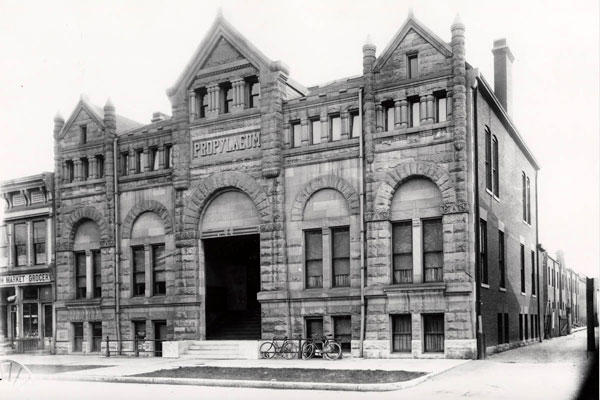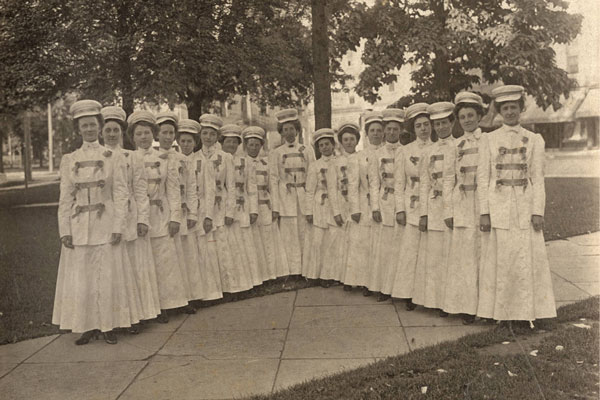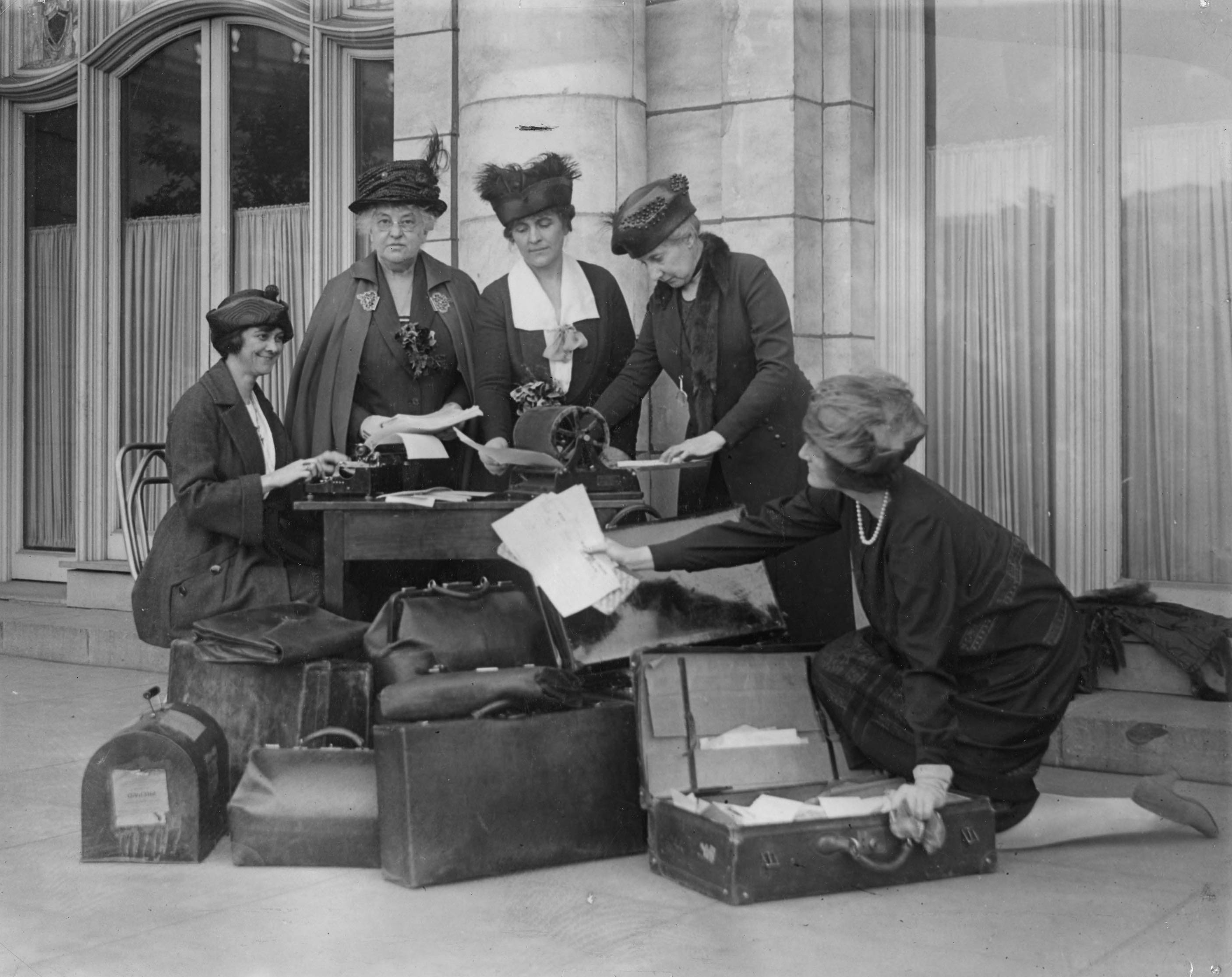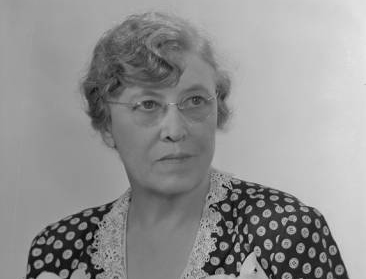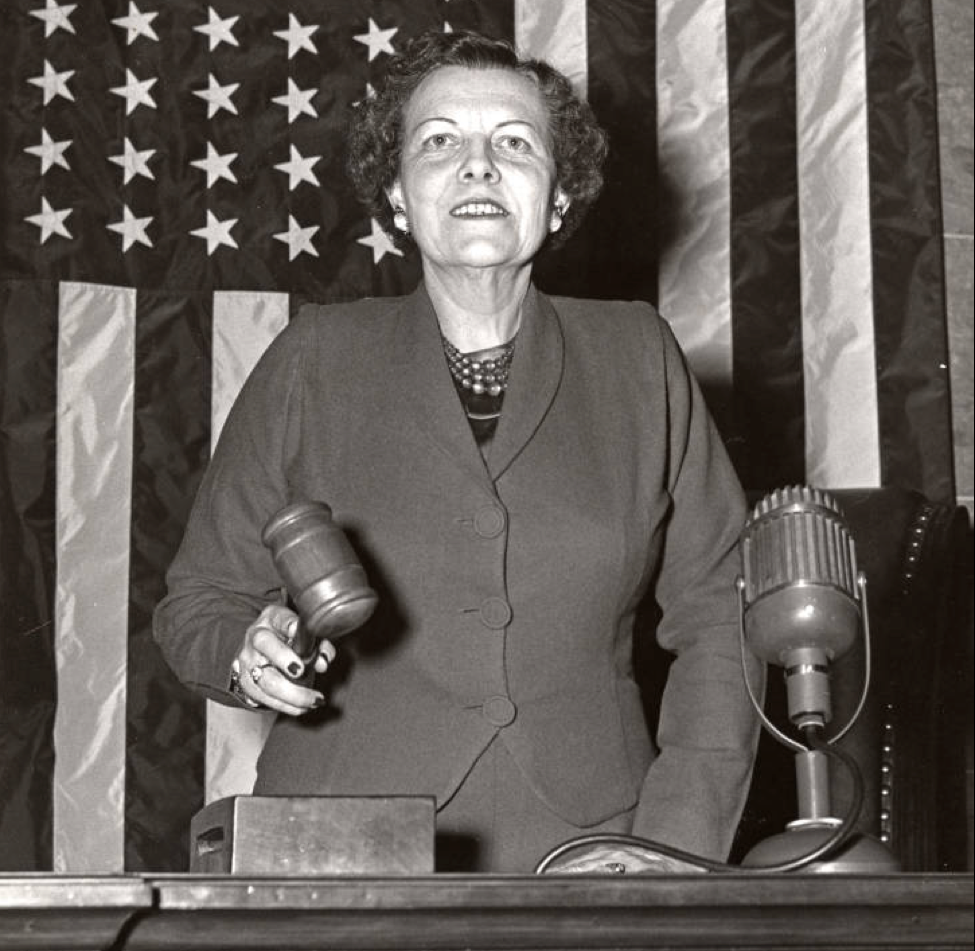Dr. Anita Morgan, 2019
Dr. Anita Morgan teaches history at IUPUI; her book, “We Must Be Fearless”: The Woman Suffrage Movement in Indiana will be published by Indiana Historical Society Press in 2020.
In 1851, Winchester native Amanda Way called for a women’s rights convention—the kick off to a 69-year effort to guarantee women’s right to vote in Indiana. Between then and the moment when Gov. James P. Goodrich, also a Winchester native, oversaw the state’s ratification of the 19th Amendment in 1920, Indiana women organized, marched, petitioned and sometimes resisted. There were ups and downs along the way, including two major wars and a brief moment in 1917 when it seemed the state would beat the nation in the race for women’s suffrage—an exciting summer when Indiana women flooded the polls before the franchise was snatched from them again. In 1920, Hoosier women’s continuous and tireless work paid off and their goal was realized. On January 16, the Indiana General Assembly approved the national amendment for women’s suffrage; then, at last, on August 26, the U.S. Congress approved the final paperwork ratifying the change to the Constitution.
Early Steps
Indiana Quaker women and men were central to the start of the story. Early on, suffrage was one of a number of women’s rights for which Quakers advocated. These demands also included improved property rights, access to the same jobs and education as men, and equal pay for equal work. Only three years after Elizabeth Cady Stanton, Lucretia Mott and Frederick Douglass attended the famous Seneca Falls Convention in New York in 1848, Hoosier women met in Dublin, Indiana, and formed the Indiana Woman’s Rights Association (IWRA). It’s widely considered one of the first state-level suffrage organizations.
The IWRA met annually through 1859, the same year that three suffragists presented the first women’s suffrage petition to the Indiana legislature. However, due to the Civil War, the voting rights movement got sidetracked. Though the editors of Peru’s The Mayflower found a way to support both the war and suffrage and continued to publish in the early 1860s, many women turned their attention to supporting the war effort. Here and around the country, suffragists saw the mobilization toward war as an opportunity to prove their “fitness” for suffrage, throwing themselves into volunteer work to support Union men on the field and their families at home. Yet when the war was over, despite women’s support of men, neither Congress nor the Indiana General Assembly recognized women’s hard work and devotion. The battle off the field, for the right to vote, would continue.
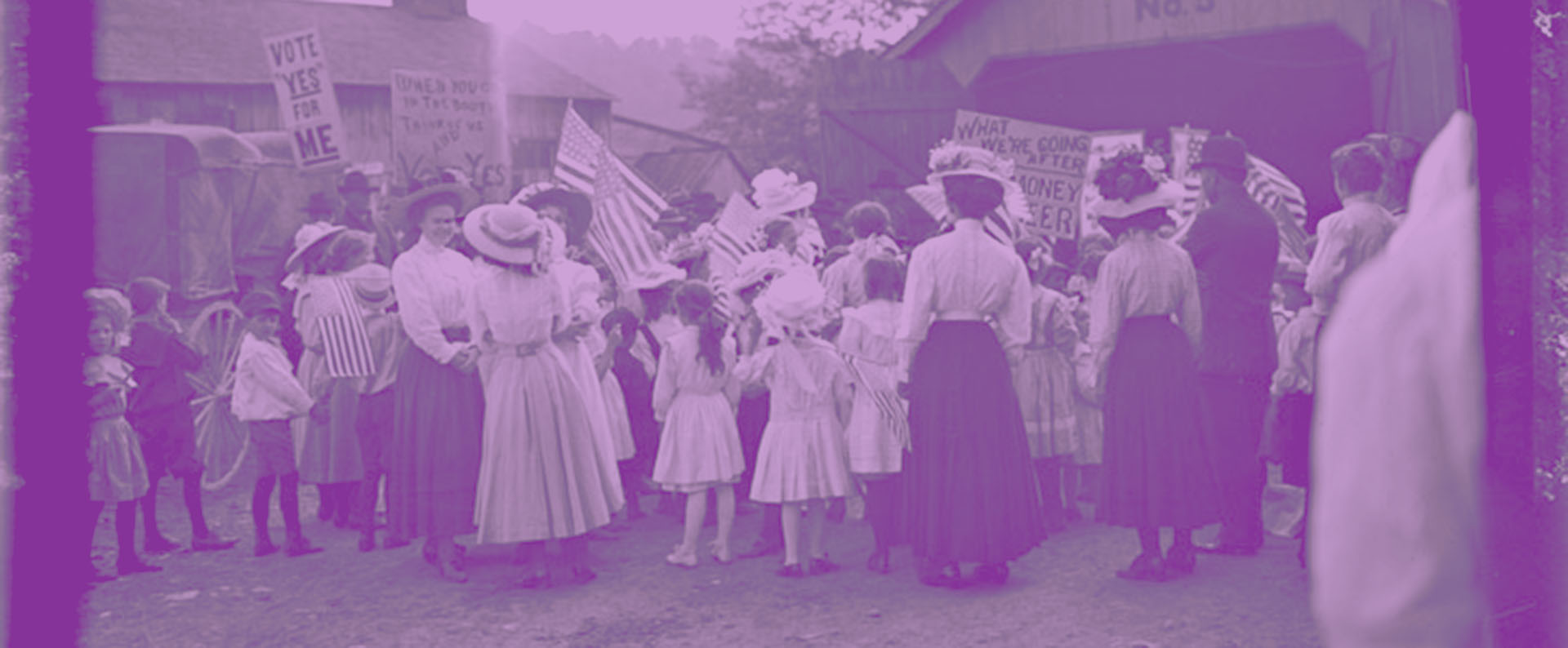
Image: Election Day Scene. Indiana Historical Society, P0468.
A Galvanizing Defeat
The IWRA began meeting again in 1869, the first year that historians can document that African American women attended Indiana women’s suffrage meetings. Over the next fifty-odd years, their attempts to secure the vote were continually hampered by the Indiana Constitution itself. Its structure made it difficult for women to gain the vote through the state legislative process. Any amendment to the state constitution had to be approved by two separate legislative sessions—yet the state legislature convened only every other year. Therefore, it took at least two years to amend the constitution, making the challenge steeper for suffragists and giving their opponents more time to organize and kill any proposed suffrage law or amendment. This challenge reared its head in 1881, when Indiana legislators approved an amendment granting Hoosier women the right to vote. But when the Indiana General Assembly reconvened in 1883, it was discovered that the 1881 law had mysteriously not been recorded in the official legislative record from the previous session. Thus, according to the Indiana Constitution, the suffrage amendment couldn’t be voted on a second time because it officially didn’t exist.
Nevertheless, They Persisted
Though Hoosier suffragists had deployed various political tactics leading up to the debate of 1881–83, they got even more organized and learned even more ways to hone their political skills. Though it would take men making legislative actions to get women the right to vote, it was women themselves who agitated, pushed and persisted. Suffragists presented petitions and gave speeches to several sessions of the state legislature. Indiana women asked for and were assigned offices at the state house so they could lobby legislators; to keep up the pressure, they learned how to call in extra suffragists at a moment’s notice. Susan B. Anthony, during one of several visits to the Hoosier state,asked a joint session of the general assembly to request a national suffrage amendment, memorably declaring, “I want the politicians of Indiana to see that there are women as well as men in this State, and they will never see it until they give them the right to vote. Make the brain under the bonnet count for as much as the brain under the hat.”
Indiana women also formed powerful and well-organized groups, including the Woman’s Franchise League, the Legislative Council, and the Indianapolis Equal Suffrage Society. By 1912, African American Hoosier women had formed their own suffrage associations, one of these meeting for the first time in the home of Madam CJ Walker.
In the midst of all of this activity and the constant setbacks, World War I broke out (the U.S. didn’t enter the war until 1917). Like most of their counterparts across the nation, the majority of Hoosier suffragists answered the call to support the Great War. But they learned a lesson from the suffrage movement during the Civil War. This time, they made suffrage a part of the plan to “make the world safe for democracy.” Suffragists knitted socks for soldiers, raised money for Liberty Loans and spoke in support of the war to various civic groups. But unlike during the 1860s, they participated in these efforts while also agitating for suffrage. Activists cannily connected their cause to the surge of wartime patriotism and rhetoric around the idea of “duty.”
Given the increasing power of the suffrage movement and the heightened expectations raised by World War I, progress appeared favorable in 1917. Thanks to continued and increasing agitation in Indiana and nationally, the Indiana General Assembly actually passed three laws favored by suffragists during the 1917 session. The first called for a convention to be held in September, for the purpose of drafting a new state constitution (with the hopes that the new constitution would include women’s suffrage). The second law amended the current state constitution to allow for women’s suffrage (which in order to become effective would have to be passed again by the 1919 legislature and approved by a majority of voters—though the passage of the constitutional convention bill and the prospects of a new state constitution appeared to make this law moot). The third law offered Indiana women partial suffrage, giving them the right to vote for presidential electors, for some state offices and in municipal elections that very year. Just as important, it also gave them the right to vote for delegates to the upcoming constitutional convention and for ratification of the new constitution.
Imagine the scene: Thousands of Indiana women celebrating their victories, rushing out to register to vote over the course of the summer of 1917. Women in their eighties and nineties joined younger women at clerks’ offices around the state. The first women to vote in the state were in Warren County; Mrs. JE McCloud was at the head of the line, thus was possibly the first woman to cast a ballot in the state. In Columbus, two African American women were the first women to register. “There was a boom Tuesday afternoon in the matter of registration…when a long file of women entered the courthouse,” remembered Natalie Parker, the president of the Porter County Woman’s Franchise League; by the end of the summer, 80 percent of all registered voters in Porter County were women.
Then came the next setback, which for Indiana women was possibly even more difficult to endure than the 1881–83 debacle. Men who opposed women’s suffrage challenged both the constitutional convention law and the partial suffrage law, and in separate rulings the Indiana Supreme Court found them to be unconstitutional. There would be no opportunity to introduce suffrage in a new state constitution, and women were stripped of their partial suffrage rights effective October 26, 1917. The constitutional amendment law still stood, but that meant restarting a long, slow process.
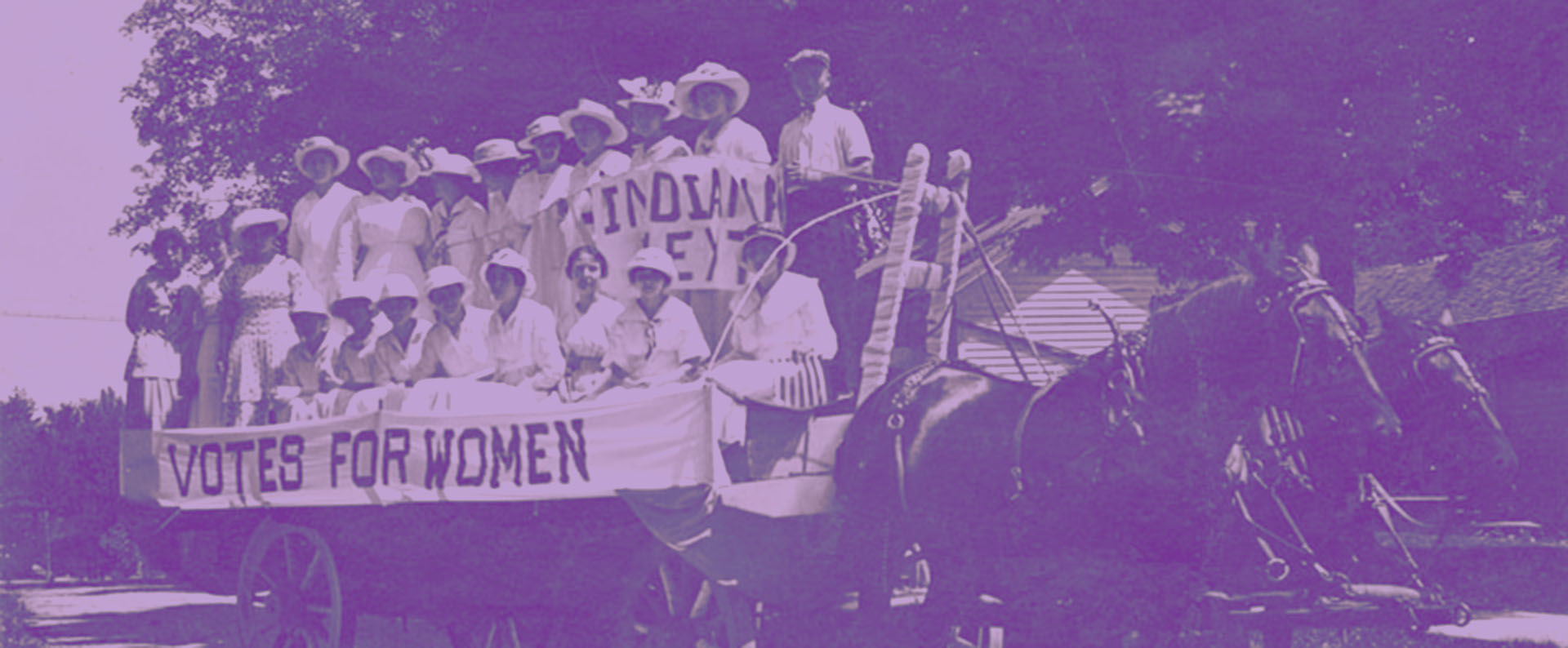
Image: Postcard, Suffragettes in Hebron, Indiana. Indiana Historical Society, P0408.
Home Stretch
The defeat of the 1917 effort heightened the importance of a federal suffrage amendment. Suffragists around the country had long debated whether state-level or federal action was the way to accomplish their goal, but by 1915, many Indiana activists, along with their sisters around the country, had coalesced around Carrie Chapman Catt and the National American Woman Suffrage Association’s “Winning Plan.” This plan had state-level suffragists campaigning for individual states to expand the franchise while also putting pressure on Congress to pass a federal amendment. Thus, even with setbacks at the state level in 1917, and again at the federal level (the U.S. Senate failed to pass a federal amendment in 1918), women kept driving toward their goal. “Real patriotism,” Mrs. Richard E. Edwards, the president of the Woman’s Franchise League of Indiana, wrote, “demands that we serve the Government no matter how out of patience we get with state authorities.” In 1918, Indiana suffragists set themselves the task of recruiting 100,000 members and 700,000 signatures petitioning Congress to pass a suffrage amendment. Mrs. Fred H. McCulloch of Fort Wayne, the chairwoman of this effort, said it would “be the instrument by which we can do it.”
So, with this final wave of pressure from suffragists, the U.S. Congress finally approved the 19th Amendment and sent it to the states for ratification after World War I ended. Indiana became the 26th state to ratify it, on January 16, 1920. It went into effect on August 26, eight days after the two-thirds majority for ratification had been achieved.
Indiana women had been everywhere in the fight for suffrage. Women like Dr. Mary Thomas, Amanda Way, May Wright Sewall, Grace Julian Clarke, Helen Gougar, Zerelda Wallace, Dr. Amelia Keller, Martha McKay, Sara Messing Stern, Dr. Hannah Graham, Laura Donnan, Carrie Barnes, Mary Nicholson, Luella McWhirter, Marie Edwards, Charity Dye, Harriet Noble, Sara and Eldena Lauter, Emma Swank, Frances Berry Coston, Ida Husted Harper, Mary Garrett Hay, and Elizabeth Boyton Harbart worked for suffrage in the state and across the nation. They surely agreed with Governor Goodrich when, in 1920, he described the ratification of the 19th Amendment as “an act of tardy justice.”



